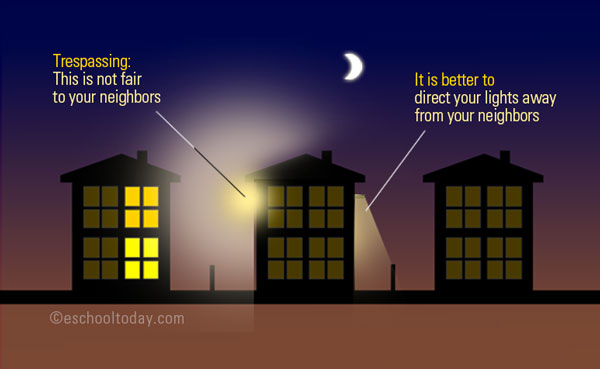- Light Pollution
What are the types of light pollution?
Light pollution comes in many forms. The most common include the following:
Skyglow:
This is the bright orange-pink glow that hangs over cities and towns in the night. Skyglow could be caused by natural factors, but also often caused by inefficient and artificial lights shinning needlessly into the sky, and further scattered by airborne dust particles, gas, and water droplets. Skyglow is better seen during poor weather conditions where more particles are present in the atmosphere. Astronomers are having increasing problems with sky glow as it interferes with the viewing of celestial (outer space) objects. For example, at the Mars Hill Observatory in Flagstaff, Arizona, sky brightness is reported to have increased by 0.5 magnitudes from 1976 to 1988
—Source (Lockwood et al. 1990).
What is sky glow? The Lighting Research Center.
Glare:
This is the effect produced when the eyes are exposed to bright light. If a bright flashlight is directed at your face in a dark place, you notice that it almost blinds you and suddenly you cannot see other objects or shadows around you. This is particularly dangerous when driving because bright lights from cars coming towards you reduce your vision and put pedestrians and other road users at risk. The most common causes of glare include bright streetlights and car lights.
Light trespass (Spillover):

This occurs when the light goes over its intended range. Think of your neighbor’s security light shining through your bedroom windows and lighting up your room all night. Light spillover is a very common subject of a complaint by many residential dwellers and is a problem that can be easily fixed with the right lighting equipment. Main sources of light trespass include dusk-to-dawn lights, sports field lighting, and commercial lighting.
